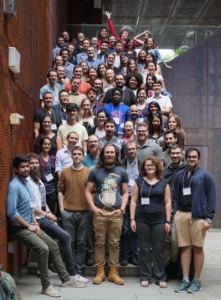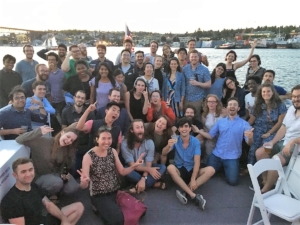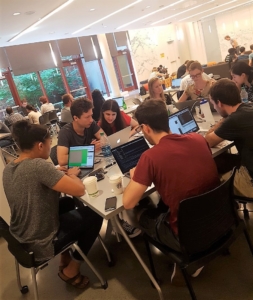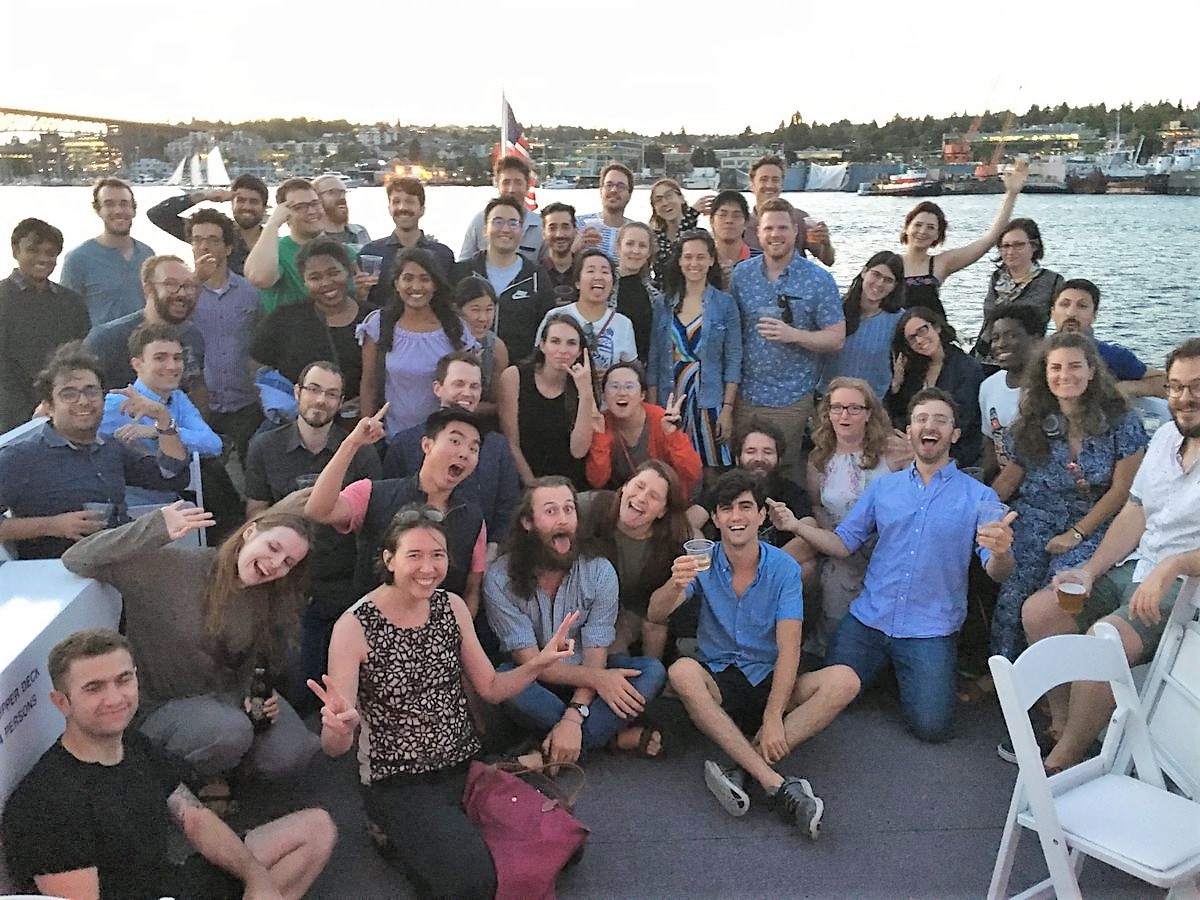By Ariel Rokem, eScience senior data scientist

More than 60 neuroscientists flocked to Seattle and the UW campus during the last week of July and the first week of August to participate in a two-week conference/summer school/hackathon. This event, held for the first time under its new name “NeuroHackademy”, evolved out of Neurohackweek, an event that was hosted at the eScience Institute in summer 2016 and summer 2017.
Participants came from all over the world and a included a mix of graduate students, postdoctoral researchers, research staff and faculty, as well as a few attendees from companies that develop neurotechnologies. They attended tutorials about data science topics such as programming, machine learning and version control, as well as lectures about specific applications of data science methods to neuroscience.
In the second week of the event, participants proceeded to use this background of new knowledge and skills to take part in a hackathon. They proposed, and then pursued, a range of projects (or “hacks”), using openly available data sets and open-source software to explore new concepts in neuroscience data analysis, and new directions in open science. This form of active learning has been previously broadly explored across several different research domains in a series of hack week events that grew out of the tri-campus Moore Sloan Data Science Environments (including the original trail-blazers Astro Hack Week, as well as Geohackweek, and the upcoming Oceanhackweek).
The extended format of this year’s event allowed the inclusion of more in-depth explorations, both in the tutorials that were taught during the first week, as well as in the projects that participants undertook during the hackathon phase. The additional time also allowed for inclusion of topics that were not covered in the one-week version, such as neuroethics.

For the instruction on neuroethics, the course included a lecture by Eran Klein, who is a practicing clinician, as well as a philosopher, and who collaborates with researchers at the Center for Sensorimotor Neural Engineering to develop an ethical framework for thinking about neurotechnologies. His lecture provided a broad set of considerations for thinking about ethical use of technology in neuroscience research and application. Other extensions of the course included more coverage of the use of machine learning in neuroscience, including lectures by Eva Dyer (Georgia Tech), Sanmi Koyejo (University of Illinois, Urbana Champaign) and Gael Varoquaux (French National Institute of Health and Medical Research).
The course also benefited from the participation of the eScience Institute cloud team, including Amanda Tan, cloud technology lead. This involvement allowed participants to learn about use of the cloud in research, and provided support for their use of cloud resources in their own hack projects. In addition, a cloud-based Jupyterhub provided a uniform and robust computational environment that participants could log into from the web browsers on their laptops.

NeuroHackademy is funded through a grant from the National Institute of Mental Health, which was awarded to the event organizers, Ariel Rokem, eScience senior data scientist, and Tal Yarkoni, director of the Psychoinformatics Lab, University of Texas at Austin. In addition, thanks to a recently awarded grant from the National Science Foundation, next year’s version of the event will include instruction by members of the UW Institute on Algorithmic Foundations of Data Science. This collaboration will allow the team to build even more robust bridges between theoretical data science fields (e.g., statistics and computer science) and their application in practice in neuroscience research.
In the spirit of open and reproducible science, all of the materials from the courses, and many of the lectures (in the form of video recordings) are openly available through the website (linked from the lecture titles in the course schedule and on the materials page).


